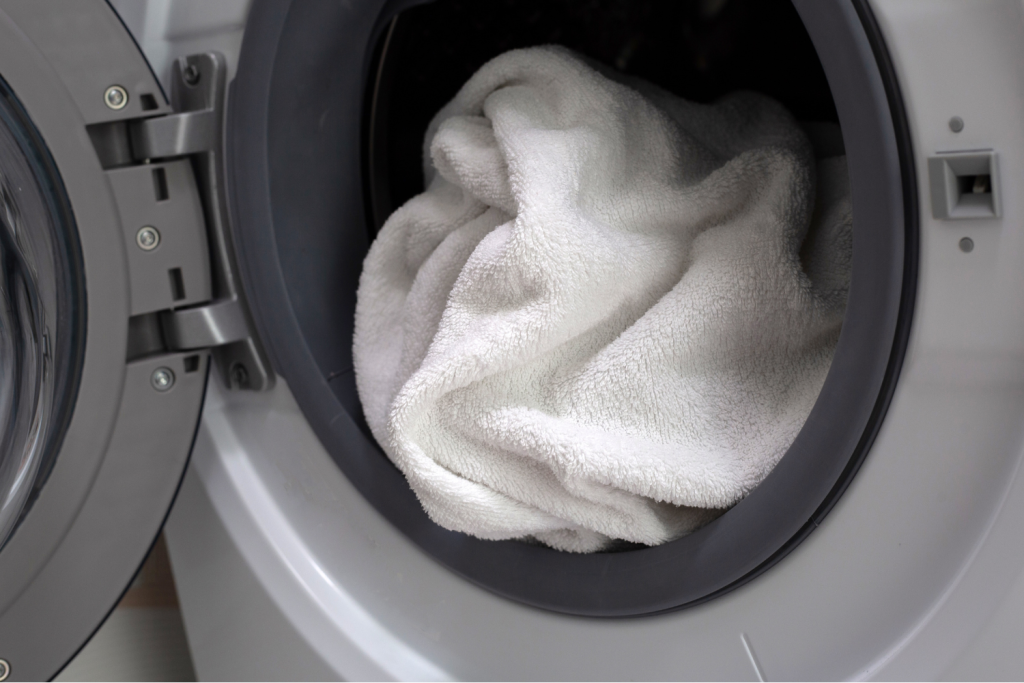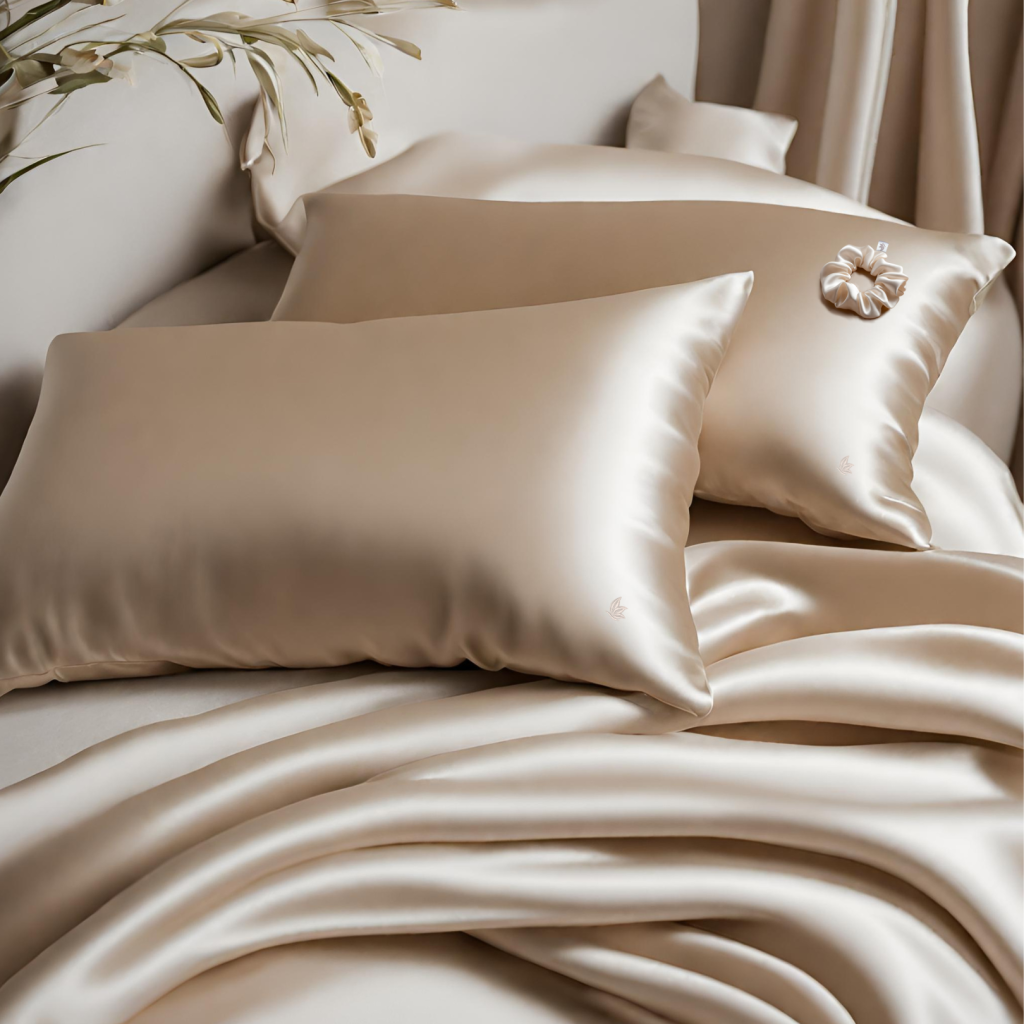You can effortlessly clean your silk pillowcases and sheets at home using either hand washing or a washing machine. Just follow these easy steps to properly wash and maintain your luxurious silk bedding.

At Naturo Curo, one of the most common questions we receive is, “Can silk be washed?” The answer is yes! Your high-quality silk pillowcases and sheets are fully washable, and caring for them is simpler than you might think. There’s no need to spend money on professional dry cleaning—silk can be safely cleaned at home using either a gentle machine wash or hand washing.
By following the proper care instructions, you can preserve the softness, shine, and durability of your silk bedding for years to come. Our expert-recommended washing techniques ensure that your pillowcases and sheets remain as beautiful and luxurious as the day you bought them. Keep reading for the best way to care for your silk effortlessly!
Beginner’s Guide: Proper Care for Brand-New Silk Pillowcases and Sheets
When you first unpack your silk sheets, be sure to review and follow the care instructions, especially if you’re washing them for the first time. Silk is surprisingly easy to maintain and only needs a little extra care to keep it in top condition.
Before using your new silk sheets, give them a gentle wash—ideally by hand in cold water. If needed, a delicate cycle in the washing machine with cold water is also suitable.
Always launder silk separately, ensuring it is washed only with other silk items. Use a mesh laundry bag and a mild detergent specifically designed for silk to protect the fabric’s delicate fibers.
Wash your silk sheets as often as you would any other bedding, or whenever they become dirty or stained. While silk naturally repels allergens, mold, and dust mites, regular cleaning helps maintain its freshness and longevity.
When drying, hang your silk sheets indoors or outdoors, but keep them away from direct sunlight to prevent damage.
Avoid using a dryer if possible, as high heat can weaken the fibers. If you must use a dryer, select the air-only setting and check frequently, removing the sheets as soon as they are dry to prevent unnecessary wear.
Choosing the right detergent is essential
Whether you decide to hand wash or machine wash your silk, selecting the right gentle detergent is essential. Since silk is a natural fiber, it’s particularly sensitive, which is one of the reasons it’s so beneficial for sensitive skin. Washing it with detergents that are too acidic or too alkaline can cause the fibers to become brittle. That’s why it’s best to use a mild, pH-neutral detergent specifically designed for silk. This will help preserve the fabric’s quality and softness with every wash.

Steer Clear of Products That Can Harm Your Silk Pillowcases and Sheets
In addition to harsh detergents, it’s important to avoid using bleach, fabric softeners, or optical brighteners when washing your silk sheets and pillowcases. These products can harm the delicate fibers and may even cause discoloration. There’s also no need to dry clean your silk items—most of the time, you can wash everything from silk pillowcases to duvet covers by hand or in your home washing machine.
Additionally, avoid using detergents containing laundry enzymes on your silk bedding or garments. These so-called “biological detergents” can harm silk fibers. To understand why, it helps to know a bit about laundry enzymes. These natural compounds are included in detergents to break down stains, particularly those caused by protein-based substances like blood, sweat, eggs, cheese, dairy, and more. Even oily stains contain some protein. The enzymes work by breaking down these proteins to lift and remove stains. However, silk itself is a protein-based fabric (made from the cocoon of a silkworm), and washing it regularly with enzyme-based detergents will weaken the fibers and compromise the fabric’s integrity.
Essential Guide to Washing Silk Pillowcases and Sheets
Wash silk separately in a “silk-only” load. Before washing, turn your silk pillowcases inside out and place all silk items in a fine mesh laundry bag to prevent damage. This is especially important if your washing machine has an agitator, as the delicate silk fabric can get caught and torn. The agitator and the interior of your machine may also have small rough spots, such as nicks or burrs from other laundry items like zippers or buttons. Using a mesh laundry bag will help safeguard your silk sheets from potential damage.
Select a Delicate Wash Cycle and Cool Water Temperature
Washing silk in cool to cold water is the best approach, as temperatures above 80°F (29°C) can cause significant harm to the fabric. Always opt for cold water when laundering silk. Avoid bleach, as it can weaken the fabric and lead to yellowing, and skip fabric softeners, which can leave a residue on the material. Silk’s natural fibers, combined with our expert charmeuse weaving method, already make it incredibly soft, so fabric softeners are unnecessary and may leave an undesirable coating on the fabric.
How to Hand Wash Silk Pillowcases and Sheets
Wash your silk items separately in cold water, using a mild detergent specifically designed for silk. Immerse the items and gently move them around with your hand, avoiding any rubbing or scrubbing. Be sure to rinse thoroughly to remove all soap residue.
How to Properly Dry Your Silk Pillowcases and Sheets
Avoid wringing out your silk items. Instead, roll them up in white towels to gently blot excess water, or lay a towel on the bed and blot the silk sheets on top. To dry your silk, either line dry or hang them indoors or outdoors, but always out of direct sunlight to protect the fabric. You can use a clothesline, non-slip hanger, or drying rack. Direct sunlight, whether inside or outside, can weaken the silk fibers and cause the colors to fade, particularly in darker silk.
Avoid using wooden drying racks, as they may transfer dyes or stains onto your silk. Depending on the temperature and conditions, your silk should dry within about 30 minutes. Never place silk items in the dryer, as heat can harm the delicate fibers. If using the dryer is unavoidable, set it to the “air” setting for no more than 15 minutes and do not use fabric softener sheets or dryer balls.
How to Properly Iron Silk Sheets
Ironing isn’t always required. While silk products may wrinkle after washing, the fibers will naturally relax and smooth out after a few nights of use. If you prefer ironing, it’s best to iron only your silk pillowcases (since they’re the visible items) on the lowest heat setting.
If you prefer to iron your silk bedding, it is possible, but should be done carefully. Always use the lowest heat setting, and iron your silk sheets and pillowcases inside out. A low-temperature iron should slide gently over the fabric. Alternatively, you can place a cloth between the iron and the silk to protect it.

Naturo Curo: Redefining Luxury Silk with Affordability and Quality
At Naturo Curo, we are dedicated to crafting exceptional silk products that combine luxury, comfort, and accessibility. Our goal is to make high-quality silk attainable for everyone without compromising on excellence. We choose premium-grade silk for our pillowcases and sheets, offering an incredibly soft feel, exceptional durability, and a touch of everyday luxury for a restful night’s sleep. Each piece of Naturo Curo silk is OEKO-TEX® Certified (Standard 100), guaranteeing that it is thoroughly tested and free from harmful chemicals, toxins, and irritants.

